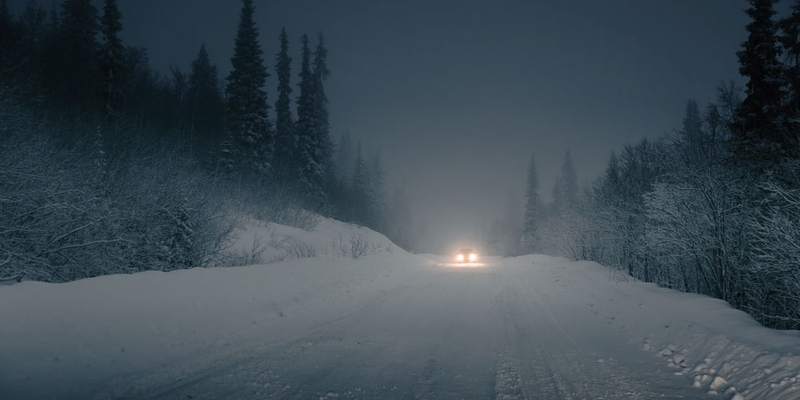
If you are not redirected within 30 seconds, please click here to continue.
Samedi: 10h – 16h HAE

If you are not redirected within 30 seconds, please click here to continue.
If you are not redirected within 30 seconds, please click here to continue.
Table of Contents
This article has been updated from a previous version.
Daylight is increasingly scarce at this time of year, and for many drivers, this means getting to work, and home again, under the cloak of darkness. Some are also restarting commutes they haven’t done since before the pandemic lockdowns. These are realities that most people can't avoid. It's also true, however, that night driving can be challenging.
The following tips will help you overcome the challenges that lie ahead as winter approaches and the nights get longer.
1. Take care of your eyes
As we age, changes in our vision may make driving at night more difficult. Have your eyes checked regularly, annually, to make sure your peepers are in tip-top shape.
2. Carry a well-stocked roadside emergency kit
Carry an emergency roadside kit in your trunk that contains (among other things) jumper cables, a first aid kit, flashlight and batteries, flares, warm clothes, and a blanket. Having a kit that contains lighting aids will ensure your visibility if your car breaks down while driving at night.
3. Keep it clean
Wipe down dirty windows that can increase the glare you get from other cars, making it more difficult to drive, and if your windows are frosted up, wait until the defrost kicks in before heading out.
4. Wear your seatbelt
Police still consider not wearing a seatbelt one of the “Big Four Killers” on the road - the other three being aggressive driving, driving while impaired, and distracted driving. Buckle up for safety’s sake but also to avoid a ticket. If you’re caught without a seatbelt on the resulting ticket could affect your car insurance rate for three years.
5. Drive sober
Driving while impaired, whether by cannabis or alcohol, significantly reduces your ability to see what’s on the road, drive defensively, and make quick decisions. Whether you designate a driver, call someone to pick you up, stay the night, take public transit, or call a taxi/ride-sharing service, there are no excuses for getting behind the wheel while impaired.
6. Drive alert
Avoid driving if you are in any way fatigued. When you are drowsy or tired, you are less alert, and your reaction time is impacted.
7. Put the phone away
You’re more likely to be involved in a collision if you’re paying attention to your phone and not the road.
8. Use GPS technology
Pre-program your GPS device before you head out on the road. This will help ensure you aren’t distracted while driving, while also ensuring you don’t get lost when driving in unfamiliar territory — an intimidating task, especially at night.
9. Follow the light
Where possible, take roads that are direct and well lit. And before you hit the road, make sure all your headlights, signal lights, and brake lights are working.
10. Follow the speed limit
With fewer cars on the road, it can be easy to speed, even accidentally. But following the limit will help reduce your chances of a collision, as well as getting a speeding ticket that could increase your auto insurance rate for years.
11. Adjust your speed to account for weather conditions
The posted speed limit isn’t a suggestion; it’s the maximum speed you should be driving in ideal weather conditions. If it’s snowing, raining, or if the roads are icy, slow down and take your time.
12. Stay in your light
Overdriving your headlights occurs when “you drive so fast your stopping distance is farther than you can see with your headlights,” Ontario’s Ministry of Transportation (MTO) reports. Give yourself the space needed to be able to safely stop and slow down.
13. Don't rely on your daytime running lights
Daytime running lights do not provide sufficient light when it's dark, even in well-lit urban areas. Use your vehicle's headlights to light the way at night but be careful when switching over to your high beams. In general, your high beams should only be used in rural areas and only if it doesn't cause issues for other drivers on the road.
14. Minimize glare from other vehicles
When faced with bright headlights, MTO recommends looking “up and beyond and slightly to the right of the oncoming lights.” And, for the vehicles behind you, make use of your rearview mirror’s anti-glare feature if their headlights are bothering you.
15. Watch for animals
Sticking to the speed limit and being especially mindful on roads surrounded by forest or fields can help prevent collisions with animals. Animals are especially common around dusk and the few hours shortly after, so scan the roads and stay alert. And remember, where there’s one animal there’s often more!
Shine a light on your lowest insurance rate
Ready to save money on your car insurance? Compare auto insurance quotes today to find the lowest insurance rates available from our network of over 30 trusted providers.
Don't waste time calling around for auto insurance
Use RATESDOTCA to shop around, and compare multiple quotes at the same time.
Latest Articles
Get money-saving tips in your inbox.
Stay on top of personal finance tips from our money experts!










